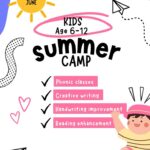An email is an electronic message sent from one person to another using the internet. For students, learning email writing focuses on understanding the basic format and essential elements while maintaining proper language and etiquette.
Key Components of an Email:
- Subject Line:
– Should be brief and clear
– Indicates what the email is about
– Example: “Request for Leave” or “Submission of History Project”
- Salutation/Greeting:
– Begin with “Dear Sir/Madam” for formal emails
– Use “Dear” followed by name for known recipients
– Example: “Dear Mr. Kumar” or “Dear Uncle John”
- Body of the Email:
– Start with a polite introduction
– Present your purpose clearly
– Keep paragraphs short and focused
– Use proper spacing between paragraphs
– Be courteous and respectful
– Proofread your mail before sending it
– Mark the tone of your mail depending on who is the receiver
- Closing:
– End with phrases like “Yours sincerely” or “Regards”
– Write your name
– Include your class and section (for school-related emails)
Note- Emails can be both formal and informal.
Here’s a simple example of a formal email:
From: [Your Email ID here]
To: [Recipient’s Email ID here]
Subject: Request for Leave
Dear Ms. Sharma,
I am writing to inform you that I will not be able to attend school tomorrow, 8th January, as I have a doctor’s appointment.
I will make sure to complete any assignments given during my absence and catch up with the class work.
Thank you for your understanding.
Yours sincerely,
Priya Patel
Class 6-B
Important Points to Remember:
– Use proper grammar and punctuation
– Check spelling before sending
– Keep the tone respectful
– Avoid using slang or informal language in formal emails
– Be clear and concise
Common Email Types for students:
– Leave applications to teachers
– Queries about assignments
– Birthday party invitations to friends
– Thank you messages
– Sharing information about school events

















